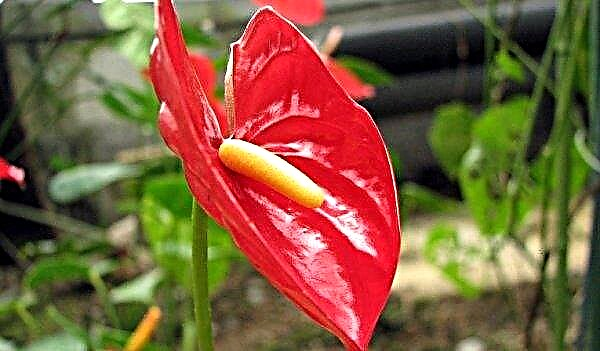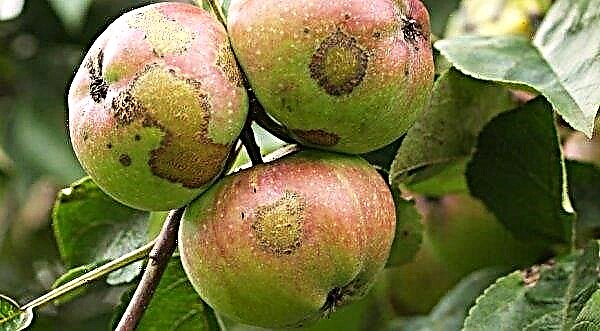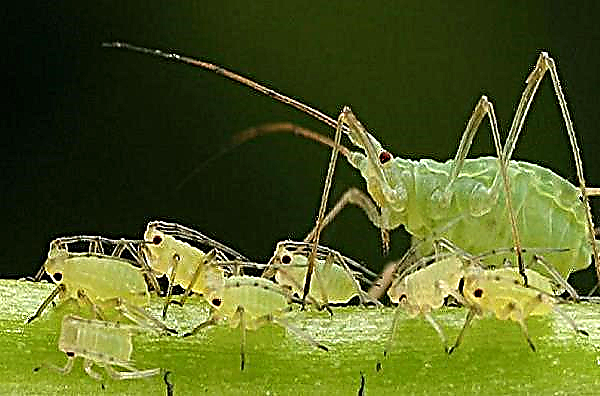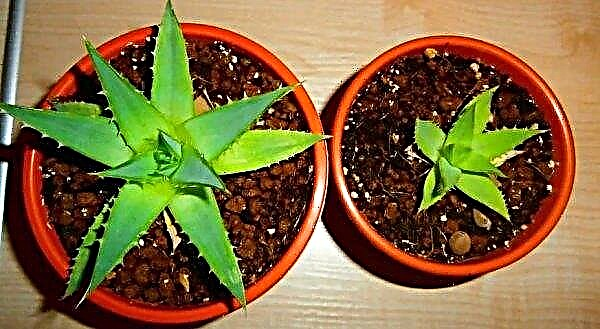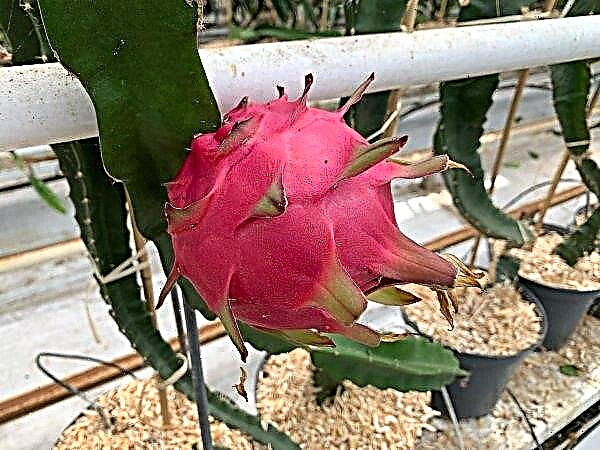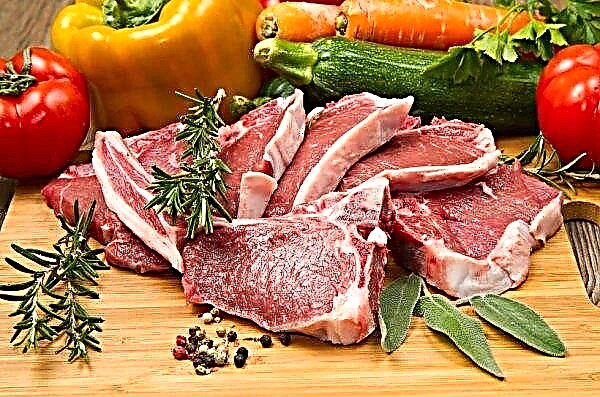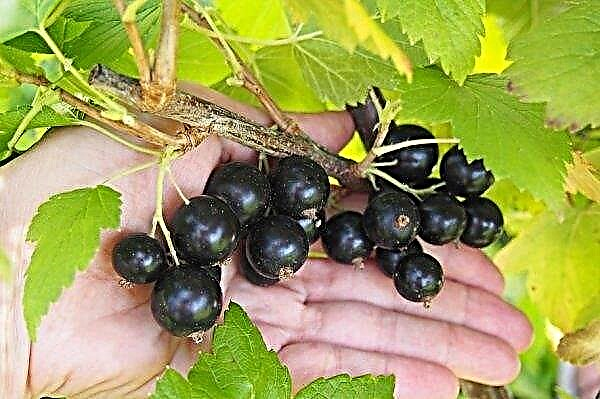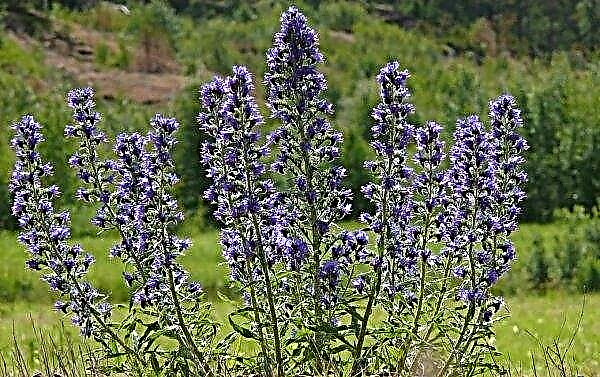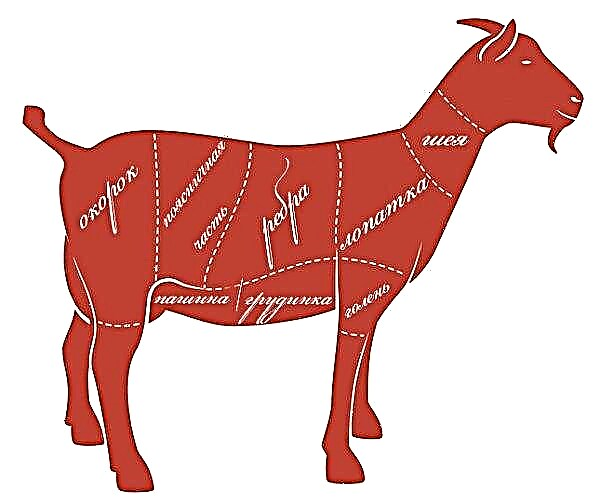Pepper is successfully grown in greenhouses and can produce several crops a year, while bushes are less susceptible to diseases and pests. Nevertheless, this culture is very capricious, and due to inappropriate environmental conditions, ripening of peppers can slow down or stop, plants can even shed ovaries and cease to bear fruit. Because of what this happens - is described in this article.
Why do not ripen peppers in a greenhouse
There are a number of reasons why peppers in a greenhouse do not spit. There is a biological and technical ripeness of these vegetables. When the technical fruits stopped in development and the seeds have already ripened, however, outwardly they are still green and hard. Biological ripeness occurs later (sometimes this period reaches 1 month), during this period vegetables are picked up in color, taste and aroma. Therefore, perhaps the fruits have not yet reached this stage, and it’s worth the wait.
Important! Sweet peppers are recommended to be collected at the stage of technical maturity, but hot peppers - when they fully gain their color and sharpness.
It is worth remembering that not all varieties are red. Perhaps a vegetable of a different color was purchased, so it will not turn red anyway. In addition, it happens that certain varieties of pepper ripen longer than most other varieties - as a rule, this is indicated on the package.  If the matter is still not in these cases, then it is worth considering in more detail the possible causes of the delayed maturation of this culture.
If the matter is still not in these cases, then it is worth considering in more detail the possible causes of the delayed maturation of this culture.
Incorrect variety
Many hybrids are designed for cultivation in mild climatic conditions, and they simply do not have enough heat and light. It is extremely important for residents of northern and middle latitudes to choose early and very early varieties.
Thickened landings
Like any other vegetable crop, pepper requires compliance with the rules of planting. If the plants are too thick, they will quickly deplete the soil and block each other's light. Therefore, it is necessary to observe a distance between rows of at least 70 cm. At the same time, tall plants are planted 40 cm apart, lower ones - 30–35 cm. In addition, a tight planting increases humidity, plants can begin to rot or hurt.
Soil acidity
Pepper does not like acid soil, therefore the optimum level of acidity is 6–7 pH. Crop rotation is also important: root crops are considered good predecessors for pepper, but potatoes, cucumbers and greens are not. Before planting, it is worthwhile to introduce humus, wood ash, and also 1 m² - 1 tbsp each. l potassium sulfate and superphosphate. Fresh manure should not be introduced, as this will increase the nitrogen content, which will stimulate the growth of tops, not fruits.
Before planting, it is worthwhile to introduce humus, wood ash, and also 1 m² - 1 tbsp each. l potassium sulfate and superphosphate. Fresh manure should not be introduced, as this will increase the nitrogen content, which will stimulate the growth of tops, not fruits.
Low temperature
The optimum temperature is considered to be from + 22 ° C to + 25 ° C. At night, it should not be below + 15 ° C, otherwise the flowers will fall. And if the temperature drops below + 12 ° C, then the plant ceases to grow at all. The vegetables and drafts adversely affect, and this must be taken into account when ventilating the greenhouse. But the pepper tolerates too high temperature (more than + 40 ° С) and begins to wither, and even at a temperature above + 32 ° С the fruits cease to be tied.
Did you know? Chocolate and bell pepper have similar properties. They both release endorphins called “hormones of happiness” into the bloodstream.
Poor watering
Plants require regular, but not too plentiful watering (about 3-4 l / m²), preferably in the morning. When fruiting, the volume of water should increase. Lack of irrigation will affect the fruits: cracks may appear. Mulching of the soil is also recommended, since the root system of peppers is very delicate and loosening can damage it. As mulch, you can use straw, mowed grass, sawdust, husk from a sunflower. This layer should be about 5-7 cm and updated once a month. It protects the soil well from overheating and hypothermia, as well as moisture loss.
Mulching of the soil is also recommended, since the root system of peppers is very delicate and loosening can damage it. As mulch, you can use straw, mowed grass, sawdust, husk from a sunflower. This layer should be about 5-7 cm and updated once a month. It protects the soil well from overheating and hypothermia, as well as moisture loss.
Insufficient or excessive lighting
Both good and poor lighting negatively affect plants. Optimally, if the daylight hours for pepper in a greenhouse last about 12 hours. If the weather is cloudy and the day is short, then you need to take care of additional lighting in the form of fluorescent lamps.
Higher plants are best planted in the center, and those that are lower - at the edges of the beds. In addition, the vegetable needs ultraviolet light, so the greenhouse should be able to transmit such rays. For example, this is achieved by using polycarbonate to make a greenhouse. Reflective screens for increasing light intensity and ultraviolet lamps can also be installed.
Nutrient deficiency
Clay soil is not suitable for pepper - this vegetable loves light earth. It should be structured and enriched with biohumus. Also, it should not have too much nitrogen: it increases the amount of foliage, which affects yield.
Feeding is recommended every 2 weeks. It is desirable that these were both organic and mineral fertilizers. During fruit setting, phosphate fertilizers are needed. And to prevent rotting of peppers, it is necessary to add fertilizing with calcium 2-3 times during the growing season, for example, calcium nitrate.
Important! Regardless of the developmental stage, pepper requires potassium. Replenish this element will help top dressing with wood ash.
A large number of ovaries
So that the bush does not form too many ovaries, you need to remove the flower that appears first at the branching point. It is also called crown. Sometimes there are several crown buds. All of them need to be removed, otherwise the plant will not branch well and spend a lot of energy on these buds. In nodes it is necessary to leave one the strongest bud. You should also not leave all the ovaries on the bush: they will only slow down the development of each other. The normal amount for a tall plant is from 17 to 25 ovaries.
You should also not leave all the ovaries on the bush: they will only slow down the development of each other. The normal amount for a tall plant is from 17 to 25 ovaries.
How to make blush peppers in a greenhouse
To make the peppers in the greenhouse blush faster:
- maintain optimal air temperature;
- ventilate - condensation in the greenhouse contributes to the development of fungi and bacteria that adversely affect these vegetables;
- avoid drafts and overheating of plants;
- regularly water and fertilize plantings;
- provide enough light;
- Do not plant plants too closely.
In addition, the correct formation of the bush plays an important role. In addition to removing the crown flower, you need to follow a few more rules. In the fork of the crown bud processes will appear. When 10-12 leaves are formed in the plant, 2-3 of the strongest leaves should be left from these shoots. Such shoots are called skeletal, they will form the basis of the entire bush. In turn, when new processes appear on the skeletal lashes, the strongest should be left, and the rest should be pinched off after the first leaf. Such actions must be repeated at each branch. In addition, the bush should be periodically examined for the presence of infertile sprouts, as well as damaged leaves or those that block the light.
In addition, the bush should be periodically examined for the presence of infertile sprouts, as well as damaged leaves or those that block the light.
Did you know? The first records of pepper found by scientists were made in India more than 3,000 years ago. This country is recognized as the birthplace of pepper.
These are the basic rules for caring for peppers in a greenhouse. But there are a number of simple requirements for plants to bear fruit more or earlier than the climate allows:
- In sunny weather, you need to ventilate the greenhouse, and at night, on the contrary, close it.
- Watering with warm water (+40 ... + 60 ° С). You need to water it gently under the root in cold weather, without getting water on the leaves and stem.
- Foliar top dressing. Plants can be sprayed with phosphorus-potassium fertilizer solutions. It can be wood ash or special stimulants. But this should not be done during the ripening period of the fruits, that is, not at the end of the summer, as this will delay the ripening process.
- Peppers collected in a state of technical maturity need to be folded in a dark place, and after a few days they will get their color.
So, despite the capriciousness of peppers, the conditions for their cultivation in the greenhouse are quite accessible and feasible. Of course, in order to get a good harvest, you will have to adhere to all the conditions for the content of this vegetable, but the results will pay off.

